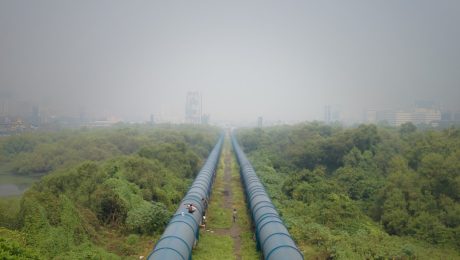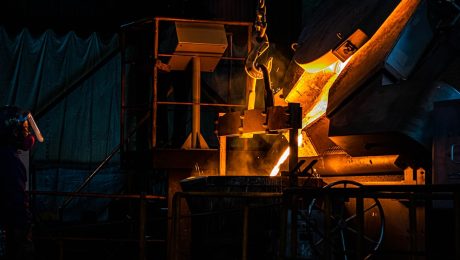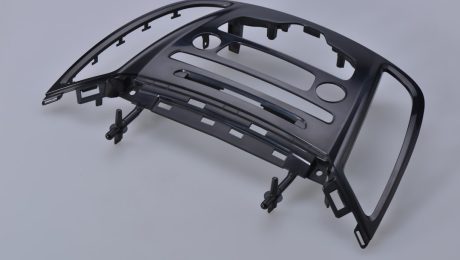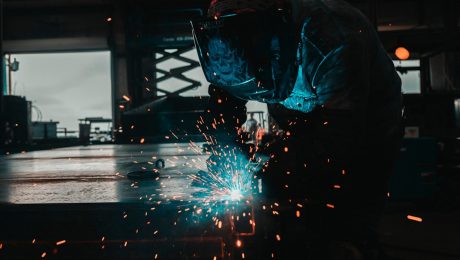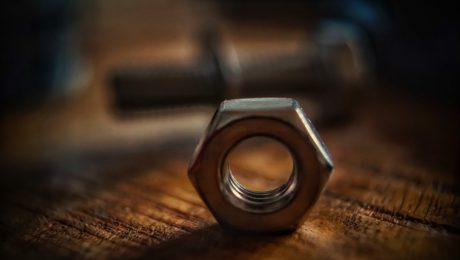Energy projects, from sprawling power plants to intricate oil and gas pipelines, rely heavily on the seamless and efficient transport of fluids. The selection of the right pipe is not merely a logistical detail; it’s a critical decision impacting safety, cost-effectiveness, and the long-term viability of the entire project. This comprehensive guide will delve into the key considerations for choosing the optimal piping system for your energy needs.
1. Material Selection: The Foundation of Pipeline Integrity
The choice of pipe material is paramount, dictated by factors such as the transported fluid, operating temperature and pressure, environmental conditions, and project budget. Common materials include:
- Steel: A workhorse in the energy industry, offering high strength and durability. Carbon steel is widely used for its cost-effectiveness, while alloy steels provide enhanced resistance to corrosion and high temperatures. Different grades of steel exist, each tailored to specific applications. For example, high-yield strength steel might be preferred for high-pressure applications, while stainless steel is crucial for corrosive environments.
- Plastic Pipes (PVC, HDPE, etc.): Lightweight and corrosion-resistant, plastic pipes are increasingly popular for low-pressure applications and non-corrosive fluids. High-density polyethylene (HDPE) is particularly suitable for gas distribution networks due to its flexibility and resistance to cracking.
- Ductile Iron: This material offers a good balance between strength, corrosion resistance, and cost. It’s frequently used in water distribution systems and some industrial applications within the energy sector.
- Copper: Known for its excellent corrosion resistance, copper piping is often used in smaller-scale applications and specialized systems requiring high purity.
Careful consideration of the material’s properties and long-term performance is crucial. Life cycle cost analysis, factoring in maintenance and replacement costs, should be a significant part of the material selection process.
2. Pressure Ratings and Flow Capacity: Ensuring Efficient Transport
Accurate pressure rating calculations are essential to prevent leaks, ruptures, and catastrophic failures. The pipe’s pressure rating (expressed in PSI or bar) must exceed the maximum operating pressure of the system. This involves careful consideration of the fluid’s pressure, temperature, and potential surges. Pressure testing is a crucial step in verifying the integrity of the installed pipeline.
Flow capacity, determined by the pipe’s diameter and the fluid’s viscosity, is equally important. Insufficient flow capacity can lead to bottlenecks, reduced efficiency, and increased energy consumption. Hydraulic calculations, often employing specialized software, are necessary to determine the optimal pipe diameter for the required flow rate. Factors like friction losses due to pipe roughness and bends must also be taken into account.
3. Diameter and Length Calculations: Optimizing System Design
The selection of pipe diameter is a complex interplay between flow rate requirements, pressure drop considerations, and cost optimization. Larger diameter pipes reduce friction losses and improve flow efficiency but come at a higher initial cost. Detailed hydraulic modeling is often employed to find the optimal balance between these competing factors. This modeling considers the entire pipeline network, including fittings, valves, and pumps, to accurately predict pressure drops and flow rates.
Pipe length impacts pressure drop and material costs. Minimizing the length of the pipeline is often desirable, but this needs to be balanced against the constraints of the terrain and other infrastructural considerations. Careful planning and surveying are crucial to optimize the pipeline’s route and minimize its length.
4. Compliance and Regulatory Standards: Meeting Legal Requirements
Energy projects are subject to stringent regulatory requirements, varying by location and the type of fluid being transported. Compliance with these standards is non-negotiable. These regulations often cover aspects such as material specifications, welding procedures, pressure testing protocols, and safety standards. Failure to meet these standards can result in significant penalties, project delays, and even safety hazards.
Understanding the applicable codes and standards (e.g., ASME, API, ASTM) is crucial. This requires expertise in relevant regulations and potentially the engagement of qualified engineers and inspectors to ensure compliance throughout the project lifecycle.
5. Cost Considerations: Balancing Initial Investment with Long-Term Operation
While the initial cost of the piping system is a significant factor, it’s crucial to consider the long-term operational costs. Factors such as maintenance, repairs, and potential replacements should be factored into the overall cost assessment. Materials with higher initial costs might offer superior durability and longevity, resulting in lower long-term maintenance expenses. A life-cycle cost analysis is essential to make informed decisions about material selection and system design.
The cost also includes installation, welding, testing, and potential remediation costs if problems arise. Proper planning and the selection of experienced contractors can help to minimize these costs.
Choosing the right pipe for energy projects is a multifaceted process demanding careful consideration of numerous technical and economic factors. By meticulously addressing the issues discussed in this guide, project managers and engineers can significantly enhance the safety, efficiency, and cost-effectiveness of their energy infrastructure.
SEO Tags:
Energy pipeline, pipe selection, pipeline materials, pressure rating, flow capacity
Offering a wide product range can be a double-edged sword. While it attracts a broader customer base and increases sales potential, it also introduces significant complexities in inventory management, marketing, and customer service. This comprehensive guide explores the multifaceted aspects of managing a diverse product catalog, helping businesses leverage the benefits while mitigating the challenges.
1. Expanding Market Reach: The Allure of Variety
A wide product range is a powerful tool for expanding market reach. By catering to a diverse range of customer needs and preferences, businesses can attract a larger customer base than those offering a limited selection. This diversification reduces reliance on a single product or market segment, making the business more resilient to fluctuations in demand. For example, a clothing retailer offering everything from casual wear to formal attire and plus-sizes will attract a significantly larger customer base than one specializing solely in men’s suits. This broader appeal translates to increased brand visibility and market share. However, expanding the range requires careful consideration of market research to identify profitable niches and avoid overextending resources into unprofitable areas. Understanding customer demographics, purchasing habits, and emerging trends is crucial for informed decision-making in product diversification.
2. Inventory Management: The Balancing Act
Managing inventory for a wide product range presents a significant challenge. The sheer volume of products necessitates robust inventory management systems. These systems should track stock levels, predict demand, manage order fulfillment, and minimize storage costs. Implementing efficient inventory tracking methods, such as barcode scanning and RFID technology, is essential for accurate stock control. Effective forecasting techniques, including analyzing historical sales data and market trends, are crucial for minimizing stockouts and reducing the risk of obsolescence. Furthermore, optimizing warehouse space and implementing efficient storage and retrieval systems are key to keeping inventory costs under control. The cost of warehousing, insurance, and potential losses due to spoilage or damage must be factored into the overall inventory management strategy. Consider adopting a just-in-time inventory system to minimize storage costs and reduce the risk of holding obsolete stock.
3. Marketing Strategies: Targeting Diverse Audiences
Marketing a wide product range requires a nuanced approach. A “one-size-fits-all” marketing strategy is unlikely to be effective. Instead, businesses need to segment their target audience and tailor their marketing messages accordingly. This involves identifying distinct customer groups based on demographics, purchasing behavior, and product preferences. For example, a company selling both high-end and budget-friendly products needs to employ different marketing channels and messaging for each segment. High-end products might be promoted through luxury publications and targeted advertising, while budget-friendly options could be advertised through social media and discount platforms. Personalized marketing campaigns, utilizing data analytics to understand individual customer preferences, are becoming increasingly important for maximizing engagement and conversion rates. A successful marketing strategy for a wide product range involves a combination of targeted advertising, content marketing, and strong brand storytelling.
4. Customer Service: Providing Personalized Support
Providing excellent customer service with a wide product range can be demanding. Customers expect prompt and accurate responses to their inquiries, regardless of the product they are interested in. A well-trained customer service team is essential for handling diverse product-related questions and resolving issues efficiently. Implementing a robust customer relationship management (CRM) system is crucial for tracking customer interactions, managing inquiries, and providing personalized support. Self-service options, such as FAQs, online tutorials, and knowledge bases, can help reduce the burden on the customer service team while empowering customers to resolve issues independently. Offering multiple channels of communication, including phone, email, live chat, and social media, is essential for providing convenient and accessible customer support. Proactive customer service, such as sending order updates and proactively addressing potential issues, can significantly enhance customer satisfaction.
5. Pricing and Profitability: Finding the Sweet Spot
Pricing a wide product range requires careful consideration of various factors, including production costs, market competition, and customer perception of value. A consistent pricing strategy is essential to maintain brand image and avoid confusing customers. However, it’s crucial to allow for flexibility in pricing based on individual product characteristics and market demand. For example, high-demand products might command higher prices, while slower-moving items might require discounts or promotions to stimulate sales. Analyzing sales data and customer feedback helps to identify pricing strategies that maximize profitability while remaining competitive. Understanding the cost structure of each product is crucial for setting profitable prices. This includes factoring in raw materials, labor, manufacturing, marketing, and distribution costs. Regular price reviews and adjustments are necessary to adapt to market changes and maintain optimal profitability across the entire product range.
Managing a wide product range is a complex undertaking, but with careful planning, efficient systems, and a customer-centric approach, businesses can leverage the significant benefits of diversification. By understanding the challenges and implementing effective strategies across inventory management, marketing, customer service, and pricing, businesses can successfully navigate the complexities and achieve sustainable growth.
SEO Tags:
Wide Product Range, Inventory Management, Diverse Product Catalog, Marketing Strategies, Customer Service
The steel industry is a global powerhouse, demanding high standards of quality, safety, and environmental responsibility. To thrive in this competitive landscape, obtaining relevant certifications is no longer a luxury but a necessity. This comprehensive guide will walk you through the world of steel industry certifications, explaining their types, benefits, and the process of achieving them.
Understanding the Landscape of Steel Industry Certifications
The range of certifications available in the steel industry is vast, catering to different aspects of the production process and final product. These certifications are crucial for demonstrating compliance with international standards, ensuring product quality, and enhancing market competitiveness. They can be broadly categorized into:
- Quality Management Systems (QMS): These certifications, such as ISO 9001, focus on establishing and maintaining a robust quality management system throughout the entire steel production lifecycle. This includes everything from raw material sourcing to final product delivery, ensuring consistent quality and customer satisfaction.
- Environmental Management Systems (EMS): Certifications like ISO 14001 demonstrate a commitment to environmental sustainability. This includes minimizing waste, reducing emissions, and conserving resources throughout the steel manufacturing process. Increasingly, customers demand environmentally responsible practices from their suppliers.
- Occupational Health and Safety (OH&S): Certifications like ISO 45001 prioritize the health and safety of employees. This involves implementing robust safety procedures, providing necessary training, and maintaining a safe working environment. A strong OH&S record is crucial for attracting and retaining skilled labor.
- Product-Specific Certifications: These certifications verify that specific steel products meet particular performance standards. Examples include certifications for structural steel, stainless steel, or specialized steel alloys, often involving rigorous testing and verification processes.
- Material Certifications: These certifications validate the chemical composition and mechanical properties of the steel, ensuring it meets the required specifications for its intended application. This is particularly important for critical applications in construction, aerospace, and automotive industries.
The Benefits of Steel Industry Certifications
Obtaining relevant certifications offers numerous advantages for steel manufacturers and suppliers:
- Enhanced Market Credibility and Competitiveness: Certifications demonstrate a commitment to quality, safety, and sustainability, giving your company a competitive edge in the global marketplace.
- Increased Customer Confidence: Customers are increasingly demanding certified products, ensuring quality and compliance with industry standards. Certifications build trust and confidence in your brand.
- Improved Operational Efficiency: Implementing certified management systems often leads to streamlined processes, reduced waste, and improved overall efficiency.
- Reduced Risks and Liabilities: Certifications help mitigate risks associated with non-compliance, accidents, and product defects, reducing potential legal and financial liabilities.
- Access to New Markets and Opportunities: Many international markets require specific certifications for product import and sale, opening up new business opportunities.
- Improved Employee Morale and Retention: A commitment to safety and quality through certification programs can improve employee morale and reduce staff turnover.
Navigating the Steel Certification Process
The certification process typically involves several key steps:
- Gap Analysis: An initial assessment to identify the gaps between your current practices and the requirements of the chosen certification standard.
- Documentation Development: Creating and implementing the necessary documentation, procedures, and policies to meet the certification requirements.
- Internal Audits: Conducting internal audits to verify compliance with the implemented system.
- Management Review: Regular management reviews to assess the effectiveness of the management system and identify areas for improvement.
- Certification Audit: An external audit conducted by a certified accreditation body to verify compliance with the chosen standard.
- Certification Issuance: Upon successful completion of the audit, the certification body issues the relevant certificate.
- Surveillance Audits: Regular surveillance audits are conducted to ensure ongoing compliance with the standard.
Choosing the Right Steel Industry Certification
The specific certifications you need will depend on your company’s operations, target markets, and customer requirements. Carefully consider your needs and priorities when selecting the appropriate certifications. Consult with industry experts or certification bodies to determine the best path for your organization.
Maintaining Your Steel Industry Certifications
Once you’ve achieved certification, it’s crucial to maintain it through ongoing compliance and regular surveillance audits. This involves continuous improvement efforts, employee training, and adherence to the requirements of the chosen standard. Failure to maintain compliance can result in the loss of certification, negatively impacting your company’s reputation and market position.
This guide provides a foundational understanding of steel industry certifications. Remember to research specific certifications relevant to your operations and consult with industry professionals for personalized guidance.
SEO Tags:
- Steel Industry Certification
- Steel Certifications
- ISO 9001 Steel
- Steel Quality Certification
- Steel Manufacturing Certification
In today’s world, noise pollution is a significant concern, impacting productivity, well-being, and even health. Effectively managing sound within buildings is crucial, and acoustic steel profile systems are emerging as a leading solution. This comprehensive guide will delve into the intricacies of these systems, exploring their design, benefits, applications, installation, and future trends.
Understanding the Design of Acoustic Steel Profile Systems
Acoustic steel profile systems are engineered frameworks designed to absorb, diffuse, or block sound waves. Unlike traditional methods, these systems offer a sleek, modern aesthetic while providing superior acoustic performance. They typically consist of a series of interconnected steel profiles, often perforated or featuring specialized acoustic treatments. These profiles create a framework onto which sound-absorbing materials, such as mineral wool, fiberglass, or recycled materials, are attached. The design itself is crucial; the spacing between profiles, the type of perforation (if any), and the depth of the system all influence the acoustic properties. Careful consideration of these factors is essential to achieve the desired level of sound absorption and reduction.
The Benefits of Choosing Acoustic Steel Profile Systems
Acoustic steel profile systems offer a multitude of benefits over traditional acoustic solutions. Their inherent strength and durability make them ideal for high-traffic areas and demanding environments. Unlike bulky acoustic panels, they can be seamlessly integrated into the architectural design, maintaining a clean and modern aesthetic. Furthermore, these systems are highly versatile, adaptable to various shapes and sizes, and can be tailored to specific acoustic requirements. Their fire-resistant properties and ease of maintenance further enhance their appeal. The longevity of steel also contributes to a lower overall cost over the lifespan of the system compared to other materials that might require more frequent replacement.
Diverse Applications of Acoustic Steel Profile Systems
The versatility of acoustic steel profile systems makes them suitable for a broad range of applications. They are frequently used in commercial settings, including offices, restaurants, and retail spaces, to minimize noise distractions and create more productive and comfortable environments. In industrial settings, they can help reduce noise pollution from machinery, improving worker safety and well-being. They are also increasingly employed in educational facilities, hospitals, and even residential buildings to enhance sound privacy and reduce noise transfer between rooms. The use of these systems is expanding to include specialized applications like recording studios and auditoriums, where precise acoustic control is paramount.
Installation and Maintenance of Acoustic Steel Profile Systems
The installation process for acoustic steel profile systems typically involves a team of skilled professionals. The initial stage involves the precise layout and fixing of the steel profiles to the existing structure. This requires careful planning and measurement to ensure accurate alignment and optimal acoustic performance. The chosen sound-absorbing material is then attached to the framework, often using specialized clips or adhesives. Once installed, the system requires minimal maintenance. Regular cleaning with a soft cloth or vacuum cleaner is generally sufficient to remove dust and debris. However, it’s important to check for any signs of damage or wear and tear and address these promptly to maintain the system’s effectiveness and longevity. The ease of access for maintenance is a significant advantage compared to some more enclosed acoustic treatments.
Future Trends in Acoustic Steel Profile Systems
The field of acoustic steel profile systems is constantly evolving. Ongoing research focuses on developing more sustainable and environmentally friendly materials, including recycled content and bio-based alternatives. Innovations in design are leading to more aesthetically pleasing and customizable systems, allowing architects and designers greater creative freedom. Smart technologies are also being integrated, enabling real-time monitoring and control of acoustic performance. The integration of advanced materials and smart technologies promises to further enhance the efficiency, sustainability, and aesthetic appeal of acoustic steel profile systems, solidifying their position as a leading solution for noise control in various applications.
Acoustic steel profile systems represent a significant advancement in noise control technology. Their combination of performance, aesthetics, and durability makes them a compelling choice for architects, designers, and building owners seeking to create quieter, more comfortable, and productive environments.
SEO Tags:
- Acoustic Steel Profile Systems
- Sound Control Solutions
- Noise Reduction Systems
- Acoustic Steel Panels
- Commercial Acoustic Solutions
The steel industry, a cornerstone of global infrastructure and manufacturing, is undergoing a dramatic transformation fueled by digitalization. No longer a sector reliant solely on traditional methods, steel commerce is embracing technological advancements to streamline operations, enhance efficiency, and improve customer experiences. This blog post delves into the key aspects of this digital revolution, exploring how technology is reshaping the way steel is sourced, traded, and delivered.
1. Optimizing the Steel Supply Chain with Digital Tools
The steel supply chain, traditionally complex and fragmented, benefits immensely from digitalization. Real-time tracking of materials, from raw materials sourcing to finished product delivery, provides unprecedented visibility. Solutions like IoT (Internet of Things) sensors embedded in shipping containers and throughout the production process provide continuous data on location, temperature, and other crucial factors. This data, fed into advanced analytics platforms, allows for predictive maintenance, minimizing downtime and optimizing logistics. Furthermore, blockchain technology can enhance transparency and traceability, ensuring the authenticity and origin of materials, combating counterfeiting, and improving overall supply chain integrity. Digital platforms also facilitate better communication and collaboration between different stakeholders, including manufacturers, suppliers, distributors, and customers, leading to improved coordination and reduced lead times.
2. E-commerce Platforms: Revolutionizing Steel Trading
The rise of e-commerce platforms specifically designed for steel trading is drastically changing the landscape. These platforms offer a centralized marketplace where buyers and sellers can connect directly, eliminating intermediaries and reducing transaction costs. Features such as online bidding, real-time price updates, and secure payment gateways provide a streamlined and efficient trading experience. Moreover, these platforms often integrate with ERP (Enterprise Resource Planning) systems, ensuring seamless data flow and improved inventory management. This increased transparency and accessibility fosters competition and drives down prices, benefiting both buyers and sellers.
3. Leveraging Big Data and AI for Enhanced Decision-Making
The massive amounts of data generated throughout the steel supply chain represent a goldmine of insights. Big data analytics tools can process this data to identify trends, predict demand, and optimize production schedules. Artificial intelligence (AI) algorithms can further refine this process, providing predictive modeling for forecasting market fluctuations, optimizing resource allocation, and improving quality control. AI-powered chatbots can also enhance customer service, providing instant answers to queries and resolving issues quickly and efficiently. By harnessing the power of big data and AI, steel companies can make more informed decisions, leading to improved profitability and competitiveness.
4. Enhancing Customer Experience Through Digitalization
Digitalization offers significant opportunities to enhance the customer experience in the steel industry. Online portals provide customers with access to real-time inventory information, order tracking, and personalized pricing. Self-service tools allow customers to manage their accounts, place orders, and access technical documentation easily. Digital communication channels, such as email and chat, enable faster response times and more efficient communication with customer service representatives. By providing a seamless and convenient digital experience, steel companies can build stronger relationships with their customers and improve customer loyalty.
5. The Role of Cybersecurity in the Digital Steel Industry
As the steel industry becomes increasingly reliant on digital technologies, cybersecurity becomes paramount. Protecting sensitive data, such as customer information, financial transactions, and intellectual property, is crucial. Robust cybersecurity measures, including firewalls, intrusion detection systems, and regular security audits, are essential to prevent cyberattacks and data breaches. Employee training on cybersecurity best practices is equally important to minimize the risk of human error. Investing in robust cybersecurity infrastructure is not just a cost; it’s a strategic imperative for ensuring the continued success and stability of the digital steel industry.
The digital transformation of the steel industry is ongoing, with new technologies and innovations constantly emerging. By embracing these advancements, steel companies can unlock significant opportunities for increased efficiency, profitability, and customer satisfaction, solidifying their position in the global marketplace for years to come.
SEO Tags:
- Digitalization in Steel
- Steel Industry 4.0
- Steel Supply Chain Management
- Steel E-commerce
- AI in Steel Industry
body {
font-family: sans-serif;
line-height: 1.6;
}
h1, h2, h3 {
color: #333;
}
h1 {
font-size: 2.5em;
}
h2 {
font-size: 2em;
}
h3 {
font-size: 1.5em;
}
Steel structures are ubiquitous in modern construction, from towering skyscrapers to intricate bridges. Their strength and reliability depend heavily on accurate and comprehensive strength calculations. This post delves into the intricacies of these calculations, providing a detailed understanding of the methods, factors, and considerations involved.
Understanding Material Properties: The Foundation of Steel Strength
Before diving into calculations, it’s crucial to grasp the fundamental material properties of steel. The most critical properties include:
- Yield Strength (fy): This represents the stress at which the steel begins to deform plastically. Beyond this point, permanent deformation occurs.
- Ultimate Tensile Strength (fu): This is the maximum stress the steel can withstand before failure.
- Young’s Modulus (E): This measures the steel’s stiffness or resistance to elastic deformation.
- Poisson’s Ratio (ν): This describes the ratio of lateral strain to axial strain under uniaxial stress.
These properties vary depending on the grade of steel used. Accurate determination of these properties is essential for reliable calculations. Material testing certificates should always be consulted to confirm the properties of the steel used in a specific project.
Load Determination and Classification: Defining the Forces at Play
Accurate strength calculations require a precise understanding of the loads acting on the steel structure. Loads are classified into:
- Dead Loads: These are permanent loads, including the weight of the structure itself, finishes, and fixed equipment.
- Live Loads: These are variable loads, such as occupancy loads, snow loads, and wind loads. They are often determined using relevant building codes and standards.
- Environmental Loads: These include snow, wind, seismic, and thermal loads. Appropriate load factors are applied to account for uncertainties and variations in these loads.
Load combinations are then determined based on the likelihood of different load scenarios occurring simultaneously. Building codes provide specific guidance on load combinations to ensure the structure’s safety under various conditions.
Stress and Strain Analysis: Quantifying the Response of Steel
Once the loads are determined, stress and strain analysis is performed to assess the internal forces and deformations within the steel members. This often involves:
- Finite Element Analysis (FEA): A powerful computational method used to model complex structures and analyze stress distributions under various load scenarios.
- Simplified Methods: For simpler structures, simplified methods like hand calculations using bending moment, shear force, and axial force diagrams can be employed.
- Stress Concentration Factors: These factors account for the amplification of stress at points of geometric discontinuity, such as holes or notches.
The results of the stress and strain analysis are used to determine whether the steel members are adequately sized to resist the applied loads without exceeding their allowable stresses.
Safety Factors and Design Codes: Ensuring Structural Integrity
Safety factors are incorporated into the design process to account for uncertainties in material properties, load estimations, and construction tolerances. These factors are typically specified in relevant design codes, such as Eurocode 3 (EN 1993) or the American Institute of Steel Construction (AISC) specifications. The safety factor is applied to the yield strength or ultimate strength of the steel to determine the allowable stress.
Design codes provide detailed guidelines on the allowable stresses, design procedures, and connection details. Compliance with these codes is crucial to ensure the structural integrity and safety of the steel structure.
Practical Applications and Case Studies: Real-World Examples
The principles discussed above are applied in various real-world scenarios. For example:
- Beam design: Calculations determine the required section modulus to resist bending moments and shear forces.
- Column design: Calculations ensure the column’s capacity to resist compressive loads and buckling.
- Connection design: Calculations verify the strength of welds, bolts, and other connection elements.
- Bridge design: Complex analysis techniques are used to account for dynamic loads and environmental factors.
Numerous case studies demonstrate the practical application of steel strength calculations in diverse structural designs. Analyzing these case studies offers valuable insights into the challenges and solutions encountered in real-world projects.
Accurate strength calculations are paramount in ensuring the safety and longevity of steel structures. By understanding the material properties, loads, stress analysis techniques, and relevant design codes, engineers can design robust and reliable steel structures that meet the demands of modern construction.
Tags: steel structure, strength calculation, structural analysis, steel design, load bearing capacity
body { font-family: sans-serif; line-height: 1.6; }
h1, h2, h3 { color: #333; }
img { max-width: 100%; height: auto; }
The safe and efficient transportation of natural gas is paramount to modern society. A crucial aspect of ensuring this safety and efficiency lies in the protective coatings applied to gas pipelines. This blog post delves into the world of EP (Epoxy), PP (Polypropylene), and PE (Polyethylene) coated pipes, exploring their applications, advantages, disadvantages, and future prospects within the gas pipeline industry.
Understanding the Role of Coatings in Gas Pipelines
Gas pipelines face numerous threats throughout their lifespan, including corrosion, abrasion, and external damage. These threats can lead to leaks, explosions, and significant environmental damage. Coatings act as a protective barrier, shielding the pipe from these hazards and extending its operational life. EP, PP, and PE coatings are popular choices due to their durability, ease of application, and cost-effectiveness in many scenarios. The choice of coating depends heavily on factors such as soil conditions, pipeline location, and the specific requirements of the project.
EP (Epoxy) Coated Pipes: A Robust Solution
Epoxy coatings are known for their excellent adhesion to metal surfaces, providing a strong barrier against corrosion. They offer superior chemical resistance and can withstand a wide range of temperatures. However, epoxy coatings can be brittle and susceptible to damage from impacts or abrasion. Their application often requires specialized equipment and skilled labor, potentially increasing installation costs. They are frequently used in areas with aggressive soil conditions or where high levels of corrosion protection are critical. The thickness of the epoxy coating is a crucial factor in its performance, with thicker coatings offering greater protection.
PP (Polypropylene) Coated Pipes: Flexibility and Durability
Polypropylene coatings offer a good balance of flexibility and durability. They are resistant to many chemicals and can withstand a wide range of temperatures. Their flexibility allows them to conform to the pipe’s surface effectively, minimizing stress points and reducing the risk of cracking. PP coatings are also relatively easy to apply and are less susceptible to damage from impacts compared to epoxy coatings. However, their abrasion resistance might not be as high as some other coatings, particularly in harsh environments with significant abrasive forces. PP coatings are a popular choice for pipelines in areas with moderate soil conditions and less extreme temperature fluctuations.
PE (Polyethylene) Coated Pipes: Cost-Effective and Widely Applicable
Polyethylene coatings are widely used in the gas pipeline industry due to their cost-effectiveness and ease of application. They are highly resistant to corrosion and offer good chemical resistance. PE coatings are flexible and can withstand some degree of impact and abrasion. Their relatively low cost makes them an attractive option for large-scale projects. However, their performance can be affected by high temperatures and UV radiation, so they might require additional protection in certain environments. Different grades of PE exist, each with varying properties, allowing for selection based on specific project requirements. Fusion-bonded epoxy (FBE) is a common type of PE coating used in gas pipelines.
Installation and Maintenance of Coated Pipes
The installation of coated pipes requires careful handling to avoid damaging the protective layer. Specialized equipment and trained personnel are usually needed to ensure proper installation and avoid compromising the integrity of the coating. Regular inspection and maintenance are crucial to identify and address any damage to the coating before it leads to significant problems. This may involve visual inspections, cathodic protection monitoring, and periodic testing to assess the coating’s condition. Prompt repair of any damage is essential to maintain the long-term effectiveness of the pipeline’s protective system.
Choosing the right coating for a gas pipeline is a complex decision that requires careful consideration of various factors. Factors such as soil conditions, pipeline location, operating pressure, and budget all play a role in determining the most suitable coating. Consultations with experienced engineers and coating specialists are highly recommended to ensure the selection of the most appropriate and cost-effective solution for each specific project.
The future of gas pipeline coatings likely involves the development of even more durable, environmentally friendly, and cost-effective materials. Research and development efforts are focused on improving the performance characteristics of existing coatings and exploring new materials with enhanced properties. The integration of smart technologies for monitoring and maintenance of pipeline coatings is also gaining traction, allowing for proactive identification and mitigation of potential issues.
SEO-Friendly Tags:
- EP Coated Pipes
- PP Coated Pipes
- PE Coated Pipes
- Gas Pipeline Coatings
- Corrosion Protection Pipelines
body {
font-family: sans-serif;
line-height: 1.6;
margin: 20px;
}
h1, h2, h3 {
color: #333;
}
h1 {
font-size: 2.5em;
}
h2 {
font-size: 2em;
}
h3 {
font-size: 1.5em;
}
img {
max-width: 100%;
height: auto;
display: block;
margin: 20px auto;
}
Shot blasting is a powerful surface preparation technique used across numerous industries to clean, deburr, and prepare materials for further processing. This comprehensive guide delves into the intricacies of this process, explaining its mechanics, benefits, and applications.
Understanding the Shot Blasting Process: A Step-by-Step Breakdown
Shot blasting involves propelling abrasive media, typically small metallic or glass shots, at high velocity onto a workpiece’s surface. This high-impact process effectively removes contaminants, rust, scale, paint, and other surface imperfections. The process generally involves these steps:
- Workpiece Preparation: The item to be blasted needs to be properly positioned within the blasting cabinet or on a conveyor system. This ensures even coverage and prevents damage to surrounding equipment.
- Abrasive Media Selection: The type of abrasive media used depends on the material being treated and the desired surface finish. Common materials include steel shot, steel grit, glass beads, and ceramic media. Each offers different levels of aggressiveness.
- Blasting Operation: A high-velocity air stream propels the abrasive media against the workpiece’s surface. The intensity and duration of blasting are carefully controlled to achieve the desired results. Different blasting methods, such as air blasting, wheel blasting, and centrifugal blasting, exist, each with its own advantages and applications.
- Post-Blasting Cleaning: After blasting, any remaining abrasive media needs to be removed from the workpiece. This is typically done using compressed air or vacuum systems.
- Inspection and Finishing: Finally, the workpiece is inspected to ensure the desired surface finish has been achieved. Further finishing processes, such as painting or coating, may then be applied.
Types of Shot Blasting Equipment and Their Applications
Several types of shot blasting equipment cater to various needs and scales of operation. These include:
- Cabinet Shot Blasters: Ideal for smaller workpieces, these enclosed systems provide a controlled environment for blasting.
- Wheel Blasters: Utilizing rotating wheels to propel the abrasive media, these are suited for larger and heavier components.
- Air Blasters: Employing compressed air to propel the media, these offer versatility but can be less efficient than wheel blasters for large-scale operations.
- Centrifugal Blasters: These use a rotating impeller to accelerate the abrasive media, offering high efficiency and consistent surface treatment.
- Automated Shot Blasting Systems: For high-volume production, automated systems enhance productivity and ensure consistent results.
The choice of equipment depends on factors such as workpiece size, material, desired finish, and production volume.
Benefits of Shot Blasting: Why Choose This Method?
Shot blasting offers numerous advantages over other surface preparation methods:
- Superior Cleaning: Effectively removes rust, scale, paint, and other contaminants from a variety of materials.
- Improved Surface Finish: Creates a uniform, consistent surface ideal for painting, coating, or other finishing processes.
- Enhanced Adhesion: Improves the adhesion of coatings, leading to longer-lasting and more durable finishes.
- Increased Fatigue Strength: Shot peening, a variation of shot blasting, can increase the fatigue strength of metal components.
- Deburring and Edge Finishing: Removes sharp edges and burrs, improving the safety and aesthetics of parts.
- Cost-Effective Solution: Can be a more efficient and cost-effective method compared to manual cleaning or other surface treatments.
Safety Precautions in Shot Blasting: Protecting Workers and Equipment
Shot blasting involves high-velocity projectiles and requires strict adherence to safety protocols. Essential safety measures include:
- Personal Protective Equipment (PPE): Workers must wear appropriate PPE, including safety helmets, goggles, respirators, and protective clothing.
- Enclosure and Containment: Shot blasting operations should be contained within enclosed systems to prevent the spread of abrasive media and dust.
- Regular Equipment Maintenance: Regular inspections and maintenance of blasting equipment are crucial to prevent malfunctions and accidents.
- Proper Ventilation: Adequate ventilation is essential to remove dust and abrasive particles from the work area, preventing respiratory problems.
- Training and Supervision: Workers must receive thorough training on safe operating procedures and proper use of equipment.
Applications of Shot Blasting Across Industries
Shot blasting finds widespread application in various industries, including:
- Automotive: Cleaning and preparing car bodies for painting.
- Aerospace: Cleaning and preparing aircraft components.
- Construction: Cleaning and preparing steel structures.
- Manufacturing: Deburring and surface finishing of metal parts.
- Marine: Cleaning and preparing ship hulls and other marine components.
- Metal Fabrication: Preparing metal surfaces for welding and other processes.
Its versatility makes it an indispensable process in numerous manufacturing and industrial settings.
Shot blasting is a powerful and versatile surface treatment technique offering significant benefits across a wide array of industries. By understanding the process, its equipment, safety considerations, and applications, you can harness its capabilities effectively and safely.
Superalloy steels are a class of high-performance materials renowned for their exceptional strength, resistance to corrosion and oxidation, and remarkable ability to withstand extreme temperatures. These properties make them indispensable in a wide array of demanding applications, pushing the boundaries of engineering and technology.
1. Aerospace Industry: Reaching for the Stars with Superalloys
The aerospace industry is arguably the most significant user of superalloys. The extreme temperatures generated by jet engines and the demanding operational conditions at high altitudes necessitate materials with exceptional thermal stability and strength. Superalloys, particularly nickel-based superalloys like Inconel and Hastelloy, are crucial components in:
- Turbine blades and vanes: These components operate at temperatures exceeding 1000°C (1832°F), requiring materials that can maintain their structural integrity under immense stress and heat. Superalloys provide the necessary creep resistance (resistance to deformation under sustained stress at high temperatures) and high-temperature strength.
- Combustion chambers: The harsh environment within a jet engine’s combustion chamber necessitates materials resistant to corrosion and oxidation from high-temperature gases. Superalloys’ inherent resistance to these degrading factors ensures the longevity and reliability of the engine.
- Afterburners: In afterburners, where fuel is injected and ignited to boost thrust, the temperatures reach even higher levels. Superalloys are essential for withstanding these extreme conditions and maintaining engine performance.
- Rocket engine components: The demanding conditions of space travel require materials with exceptional strength and resistance to extreme temperatures. Superalloys are used in various rocket engine components, contributing to reliable and efficient space missions.
2. Energy Sector: Powering a Sustainable Future
The energy sector is another key area where superalloys play a pivotal role. Their ability to withstand high temperatures and corrosive environments makes them ideal for applications in:
- Gas turbines for power generation: Similar to aerospace applications, gas turbines used in power plants rely on superalloys for their turbine blades and other critical components. These turbines operate at high temperatures and pressures, demanding materials with exceptional strength and durability.
- Nuclear reactors: In nuclear power plants, superalloys are used in components that must withstand high temperatures and radiation. Their corrosion resistance is vital for maintaining the integrity of the reactor system.
- Oil and gas processing: The harsh conditions in oil and gas refineries require materials resistant to corrosion from various chemicals and high temperatures. Superalloys are used in valves, pumps, and other equipment operating in these challenging environments.
3. Chemical Processing: Withstanding Harsh Environments
The chemical processing industry often deals with highly corrosive substances and extreme temperatures. Superalloys, particularly those with excellent corrosion resistance, are essential for:
- Chemical reactors: Superalloys are used to construct reactors that handle highly corrosive chemicals at elevated temperatures. Their resistance to chemical attack ensures the longevity and safety of these critical components.
- Heat exchangers: In chemical processes, heat exchangers are used to transfer heat between fluids. Superalloys are used in applications where the fluids are highly corrosive or the temperatures are extremely high.
- Piping and valves: Superalloy piping and valves are used in chemical plants to transport and control corrosive fluids at high temperatures and pressures.
4. Medical Applications: Precision and Durability
While less prominent than other sectors, superalloys are finding increasing use in medical applications due to their biocompatibility and strength:
- Implants: Certain superalloys are biocompatible and possess the necessary strength and corrosion resistance for use in medical implants, such as orthopedic devices and dental components.
- Surgical instruments: The durability and resistance to sterilization processes make superalloys suitable for the construction of certain surgical instruments.
5. Industrial Applications: Expanding Horizons
Beyond the sectors mentioned above, superalloys find applications in various industrial settings where high temperature, high strength, and corrosion resistance are crucial:
- High-temperature furnaces: Superalloys are used in components of high-temperature furnaces used in various industrial processes.
- Automotive components (niche applications): In high-performance vehicles, specific components might utilize superalloys for their enhanced durability and performance.
The remarkable properties of superalloy steels continue to drive innovation and advancements across diverse industries. As technology progresses, the demand for these high-performance materials is only expected to increase, further cementing their vital role in shaping our future.
SEO-Friendly Tags:
- Superalloy Steel
- Superalloy Applications
- High-Temperature Alloys
- Nickel-Based Superalloys
- Aerospace Materials
Winter’s harsh conditions – freezing temperatures, snow, ice, and de-icing salts – can wreak havoc on unprotected metal. But galvanized products, with their zinc coating, offer superior protection and longevity even in the coldest climates. This post delves into the specific performance characteristics of galvanized materials in cold weather, helping you understand why they’re the ideal choice for a range of outdoor applications.
Unwavering Corrosion Resistance in Freezing Temperatures
The primary benefit of galvanization is its exceptional corrosion resistance. The zinc coating acts as a sacrificial anode, protecting the underlying steel from rust and degradation. While some might assume that freezing temperatures accelerate corrosion, the opposite is often true. Low temperatures slow down the electrochemical reactions that cause rust. However, the presence of moisture and de-icing salts is crucial. Galvanization effectively prevents these corrosive agents from reaching the base metal, even when ice and snow are present. The zinc coating remains intact, safeguarding the structure’s integrity throughout the winter months and beyond. The thickness of the zinc coating is directly proportional to the level of protection offered; thicker coatings provide superior resistance to corrosion in harsh environments.
Withstanding the Impact of Snow and Ice Buildup
The weight of accumulated snow and ice can place considerable stress on structures. Galvanized steel, known for its high tensile strength, effectively handles these loads. The zinc coating also provides a relatively smooth surface, reducing the adhesion of ice and snow, making it easier to remove accumulations. While the weight of heavy snow and ice can still cause damage, galvanized materials offer superior resistance to bending and deformation compared to unprotected steel, minimizing the risk of structural failure. Proper design and installation are crucial, alongside the choice of galvanized steel, to ensure the structure can withstand the stresses imposed by winter weather. Consider using heavier gauge galvanized steel in areas expecting significant snow accumulation.
Understanding Thermal Expansion and Contraction
Significant temperature fluctuations between day and night in cold climates lead to thermal expansion and contraction of materials. Galvanized steel, like other metals, undergoes these changes. However, the zinc coating doesn’t significantly affect the material’s thermal expansion properties. Understanding this is crucial for proper design and installation. Expansion joints and other design considerations can mitigate the potential for stress cracks or damage caused by repeated expansion and contraction cycles. Using appropriate fasteners and allowing for movement can prevent issues related to thermal stress, ensuring the longevity of the galvanized structure.
Essential Maintenance for Optimal Performance in Cold Climates
While galvanization offers exceptional protection, minimal maintenance can prolong the lifespan of galvanized products even further. Regular inspections for any signs of damage, such as scratches or exposed steel, are recommended. Small scratches can be touched up with zinc-rich paint to restore the protective layer. Removal of ice and snow should be done carefully to avoid damaging the coating. Avoid using abrasive tools or harsh chemicals that can compromise the zinc layer. For larger structures, professional inspections might be necessary to ensure structural integrity and address any potential issues early on.
Choosing the Right Galvanized Material for Your Cold Climate Project
The choice of galvanized material depends on the specific application and the severity of the cold climate. Factors to consider include the thickness of the zinc coating (measured in ounces per square foot), the gauge of the steel (thicker gauges are stronger), and the type of galvanization (hot-dip galvanizing offers superior protection compared to electro-galvanizing). For extremely harsh environments with heavy snowfall, ice, and frequent de-icing salt usage, a heavier gauge steel with a thicker zinc coating is recommended. Consult with a materials specialist or engineer to determine the most appropriate galvanized material for your project to ensure optimal performance and longevity in the cold.
In conclusion, galvanized products offer a robust and reliable solution for various applications in cold climates. Their exceptional corrosion resistance, high strength, and ability to withstand the impacts of snow and ice make them a superior choice compared to unprotected steel. By understanding the factors discussed above and implementing appropriate maintenance practices, you can ensure the long-term performance and durability of your galvanized structures, even in the harshest winter conditions.
Tags: galvanized steel, cold climate, corrosion resistance, winter protection, snow and ice, thermal expansion, maintenance

